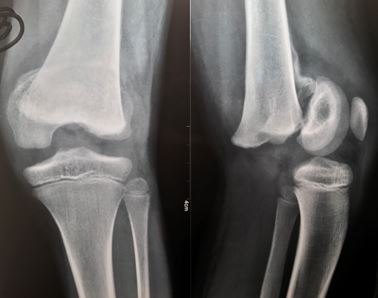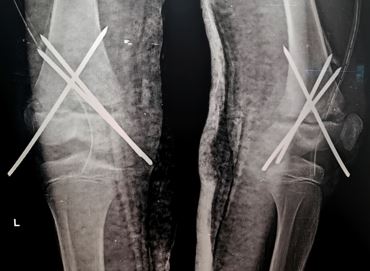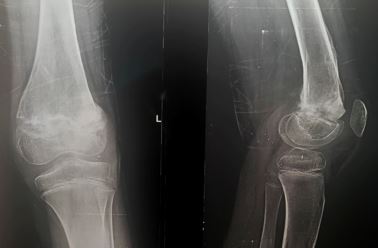Salter-Harris type II fracture of the femoral bone in an 8-year old boy- A Case Report
Gaur TNS1*, Lashkare D2, Moolchandani D3, Rao H4, Singh S5
1* Tribhuwan Narayan Singh Gaur, Associate Professor, Department of Orthopedics, PCMS, Bhopal, Madhya Pradesh, India.
2 D Lashkare, Department of Orthopedics, PCMS, Bhopal, Madhya Pradesh, India.
3 D Moolchandani, Department of Orthopedics, PCMS, Bhopal, Madhya Pradesh, India.
4 H Rao, Department of Orthopedics, PCMS, Bhopal, Madhya Pradesh, India.
5 S Singh, Department of Orthopedics, PCMS, Bhopal, Madhya Pradesh, India.
Introduction: Distal femur epiphyseolysis, i.e. separation of physis at the distal femur in the immature skeleton of children consists of physis displacement or fracture or both is rarely seen and is often associated with complications. Physeal fractures or dislocation (also known as knee dislocation) should be treated as a medical emergency usually within 6 hours of trauma by adequate reduction, stabilization and vascular injury repair in order to prevent pre-mature physeal closure, deformity and growth arrest thereby leading to limb length discrepancy.
Case Report: Reported here is a rare case of Salter Harris type II fracture dislocation of the distal femur in an 8-year-old boy who presented to our hospital with swelling and flexion deformity of the left knee 15 days after trauma and was previously treated with slab application and immobilization at a rural health centre. Open reduction and internal fixation was performed with Kirschner wires. These were removed after 6 weeks. Post-operative evaluation after 4 months showed no deformity or limb length discrepancy. Radiograph was suggestive of adequate alignment and no bony abnormality.
Conclusion: Although rare, distal femur epiphyseal injuries of the childhood are of a great concern because of the degree of bone deformities, growth disturbances and significant disabilities caused by them. A detailed study of the these type of injuries helps in deciding the treatment methods and procedures to be opted, which eventually affects the prognosis and outcome in such cases.
Keywords: Salter Harris, distal femur fracture, knee dislocation, vascular injury, growth plate
| Corresponding Author | How to Cite this Article | To Browse |
|---|---|---|
| , Associate Professor, Department of Orthopedics, PCMS, Bhopal, Madhya Pradesh, India. Email: |
Gaur TNS, Lashkare D, Moolchandani D, Rao H, Singh S, Salter-Harris type II fracture of the femoral bone in an 8-year old boy- A Case Report. ojmpc. 2018;24(1):42-44. Available From https://ojmpc.com/index.php/ojmpc/article/view/67 |





